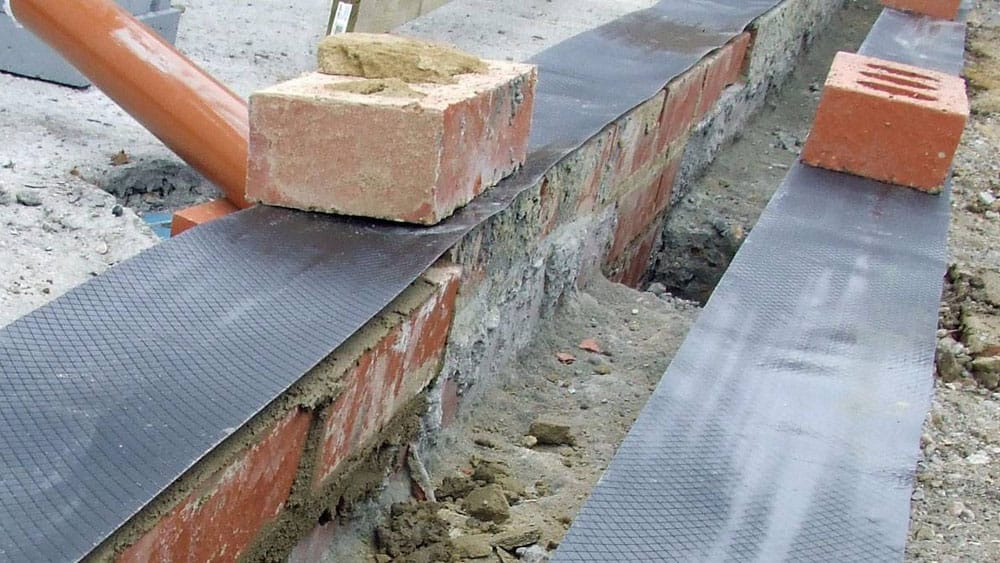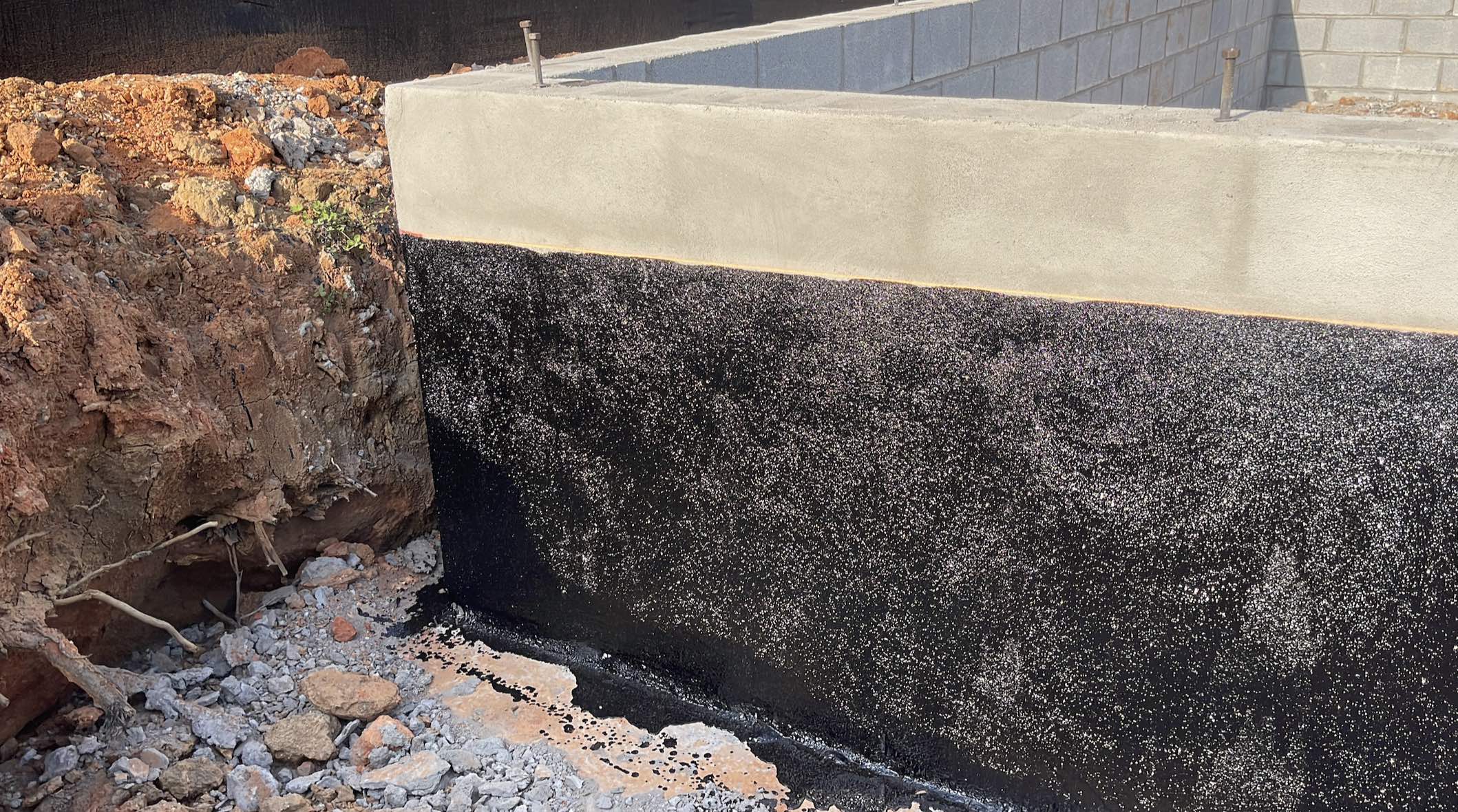What separates rising vs. penetrating damp explained by a damp specialist newcastle
What separates rising vs. penetrating damp explained by a damp specialist newcastle
Blog Article
Comprehending the Significance of Damp Proofing in Stopping Structural Damages
Wet proofing acts as a vital defense against dampness infiltration in buildings. This safety step can protect against considerable architectural damages, yet numerous homeowner remain uninformed of its importance. Acknowledging the indicators of moisture and recognizing the various services offered can be vital. Disregarding damp proofing can lead to severe consequences. What are the particular threats and solutions that residential or commercial property owners should think about?
What Perspires Proofing and How Does It Function?
Wet proofing offers as a vital obstacle versus dampness breach in buildings. damp specialist newcastle. This procedure entails applying specific materials and techniques to prevent water from passing through walls, floors, and other architectural components. Generally, wet proofing can be attained with the setup of damp evidence membranes, layers, or making use of specialized sealants.These approaches work by developing a safety layer that inhibits wetness activity, making sure that the interior atmosphere remains healthy and balanced and completely dry. Wet proofing is particularly crucial in areas vulnerable to high moisture or groundwater, as it aids keep the honesty of the structure over time.Moreover, efficient wet proofing contributes to energy effectiveness by protecting against warmth loss related to moist settings. By attending to possible moisture issues prior to they intensify, damp proofing works as an aggressive step in safeguarding structures from the destructive effects of water damage, ultimately lengthening their life-span and maintaining their value
Typical Signs of Wetness in a Building
Moisture concerns within a structure can show up through a number of obvious indications that show the presence of dampness. One popular indication is the look of water discolorations on ceilings or walls, which frequently shows dampness seepage. Furthermore, peeling off or gurgling paint can recommend that excess moisture is entraped underneath the surface, bring about degeneration. An additional usual indicator is the existence of mold and mold, which grow in wet problems and can usually be identified by their stuffy smell. A surge in moisture levels can cause condensation on windows and various other surfaces, highlighting moisture issues. Warped or irregular floor covering might signify underlying moisture that compromises structural honesty. Acknowledging these indications early can help mitigate possible damages and maintain a safe living environment. Regular assessments and prompt action are essential in dealing with dampness problems prior to they escalate.
The Threats of Disregarding Damp Proofing
Disregarding wet proofing can bring about considerable threats to a building's architectural integrity, as wetness accumulation may compromise foundations and walls. Additionally, extended dampness develops an environment favorable to mold growth, positioning severe health threats to passengers. Addressing these risks is essential for making sure both safety and security and long life of the residential property.
Structural Stability Risks
They expose their properties to considerable structural stability hazards when house owners ignore the value of effective damp proofing. Extended dampness infiltration can cause the advancement of mold and mildew, which compromises fundamental elements and can endanger general security. In addition, excess dampness can erode concrete and brickwork, causing cracks and architectural failings. Wood elements are particularly at risk; they can rot and lose load-bearing ability, positioning significant dangers to the building's structure. Unattended damp problems may bring in insects, such as termites, which even more aggravate structural damage. Inevitably, overlooking moist proofing actions can lead to expensive repairs and potential safety risks, highlighting the essential function of positive wet management in protecting the stability of houses.
Carcinogen Issues
Exactly how can a seemingly minor oversight lead to significant health risks? Overlooking wet proofing can develop an environment for mold and mildew growth, which postures substantial health and wellness risks. Mold spores can set off allergic responses, respiratory system concerns, and various other health and wellness problems, especially in vulnerable populations such as kids, the elderly, and people with pre-existing conditions. Additionally, consistent moisture can attract insects like pests and rodents, which lug conditions that better jeopardize health and wellness. The existence of dampness additionally adds to a decrease in indoor air quality, exacerbating asthma and other respiratory system conditions. The failure to deal with damp problems not just threatens architectural stability yet likewise jeopardizes the wellness of owners, highlighting the vital requirement for effective moist proofing steps.
Different Kinds of Damp Proofing Solutions
Although different variables can contribute to damp concerns in buildings, choosing the appropriate moist proofing option is important for preserving architectural honesty. Several choices are offered, each customized to details conditions.One usual remedy is a damp-proof membrane (DPM), commonly constructed from polyethylene or bitumen, which is mounted in wall surfaces and floorings to stop moisture access. One more choice is damp-proof courses (DPC), which are layers of water resistant material placed within wall surfaces to obstruct climbing damp.Chemical damp proofing includes injecting waterproofing chemicals right into wall surfaces to produce a barrier against wetness. Furthermore, exterior therapies such as tanking, which involves using a waterproof layer to the outside of foundations, can be effective in protecting against water penetration.Each service has its advantages and is picked based upon the building's details problems, ecological conditions, and long-lasting maintenance considerations, ensuring optimal protection against damp-related damages.

The Price of Damp Damages vs. Avoidance
Recognizing the economic ramifications of moist damages compared to prevention highlights the relevance of positive procedures. The expenses connected with wet damages can be substantial, consisting of repair services to structural aspects, mold remediation, and prospective health-related expenditures. Home owners might face significant economic strain if comprehensive damage happens, leading to boosted insurance costs and shed property value.In comparison, buying damp proofing services is normally much more affordable. First expenses for prevention approaches, such as improving or installing damp-proof membranes water drainage systems, are typically outweighed by the long-lasting financial savings from preventing expensive repairs. Additionally, protecting against moist problems can improve a residential or commercial property's general worth and allure, making it a wise investment. When examining the price of wet damages versus avoidance, it becomes clear that taking positive steps can protect monetary interests and maintain the integrity of the residential property with time.
Choosing the Right Damp Proofing Technique for Your Building
Which wet proofing technique is most suitable for a particular home usually depends on different factors, including the building's age, existing moisture problems, and local environmental problems. For older structures, typical approaches such as bitumen membranes or cementitious finishings might be extra effective, as they can give a durable barrier against climbing moist. On the other hand, newer buildings mould treatment newcastle might gain from modern-day services like infused damp-proof programs, which are less intrusive and can be tailored to details dampness challenges.Additionally, homes in locations with high water tables or hefty rains may call for advanced techniques, such as tooth cavity wall surface drain systems or exterior waterproofing. Home owners must also think about the specific materials made use of in their building's building and construction, as some techniques may not work. Ultimately, a comprehensive evaluation by a specialist can direct homeowner in picking one of the most reliable damp proofing method tailored to their unique situations.
Maintaining Your Damp Proofing System In Time
Routine upkeep of a wet proofing system is important for guaranteeing its long-lasting performance and shielding a building from moisture-related damage. Home proprietors need to conduct routine examinations to identify any type of indications of wear or compromise in the moist proofing layer. This includes monitoring for cracks, peeling off paint, or mold growth, which may indicate moisture intrusion.Additionally, it is advisable to clean gutters and downspouts on a regular basis to prevent water accumulation around the foundation. Reapplying sealants or membranes may be required if degeneration is observed.Engaging expert solutions for regular evaluations can even more improve the sturdiness of the system. These experts can supply insights into possible susceptabilities and recommend prompt repairs.
Regularly Asked Questions
How Much Time Does Damp Proofing Therapy Last Before Needing Repair Services?
The longevity of wet proofing treatment commonly ranges from 10 to three decades, relying on factors such as the technique used, ecological problems, and maintenance practices. Routine evaluations can aid identify when repair work might be necessary.
Is Do It Yourself Damp Proofing Effective Compared to Professional Solutions?
The effectiveness of DIY wet proofing differs significantly. mould removal newcastle. While some people may accomplish satisfying outcomes, professional services usually guarantee complete remedies, leveraging competence and quality products to protect against future issues extra dependably than many do it yourself efforts
Can Damp Proofing Improve Indoor Air Quality?
The inquiry of whether wet proofing can boost interior air high quality emerges frequently. Efficient moist proofing minimizes wetness degrees, therefore minimizing mold growth and allergens, ultimately adding to a much healthier indoor environment for passengers.
Exist Particular Laws for Damp Proofing in Different Areas?
Rules for damp proofing differ by area, usually affected by regional building regulations and ecological conditions. Compliance guarantees effective moisture control, protecting structures and advertising safety and security, which highlights the requirement for adherence to these specific regulations.

What Are the Long-Term Perks of Proper Damp Proofing?
The long-term benefits of appropriate moist proofing include boosted architectural honesty, reduced maintenance expenses, boosted indoor air top quality, and boosted residential or commercial property worth. These advantages add to a much healthier living atmosphere and prolonged life expectancy of buildings. Usually, wet proofing can be accomplished with the installation of wet proof membranes, coverings, or the use of specialized sealants.These techniques work by creating a safety layer that inhibits moisture activity, making sure that the interior environment remains healthy and balanced and completely dry. Moist proofing is particularly important in locations vulnerable to high humidity or groundwater, as it helps preserve the honesty of the structure over time.Moreover, reliable moist proofing contributes to energy performance by stopping warmth loss connected with damp atmospheres. Neglecting moist proofing can lead to significant hazards to a building's architectural honesty, as wetness accumulation may damage wall surfaces and structures (damp specialist newcastle). Different elements can add to damp concerns in buildings, choosing the ideal moist proofing service is crucial for preserving structural stability. Which moist proofing technique is most ideal for a particular building commonly depends on numerous elements, including the building's age, existing wetness concerns, and neighborhood environmental conditions
Report this page